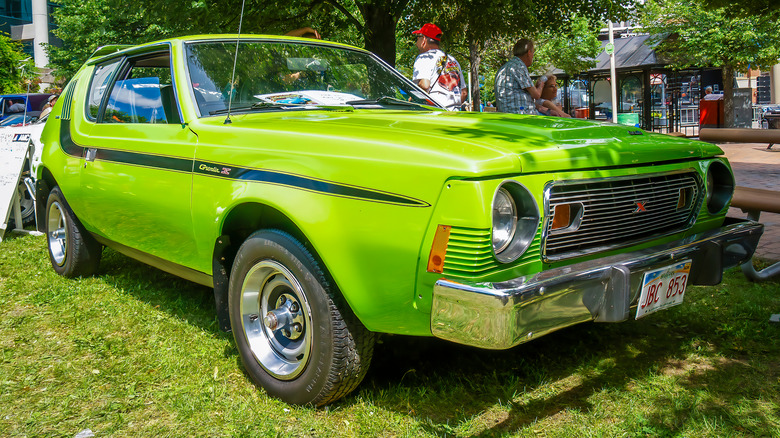
The AMC Gremlin has been the butt of many automotive jokes throughout the years, often appearing on lists of the worst cars in automotive history. It joined the Pacer as a strangely styled anomaly in AMC’s otherwise impressive history. AMC cranked out several underrated muscle cars throughout the ’60s and ’70s, along with some of the most durable Jeep models ever, during its ownership of the legendary off-road badge between 1970 and 1986.
The Gremlin was launched on April Fool’s Day in 1970 as a shortened version of the Hornet and an intended competitor to the Ford Pinto, Chevrolet Vega, and other subcompact models of the era. AMC design executive Dick Teague famously sketched the Gremlin on a Northwest Orient air sickness bag based on studies that had previously been done by designer Bob Nixon.
The Gremlin remained in production through 1978 and, over its lifespan, was equipped with engines ranging in size from 121 to 304 cubic inches. Its reputation as a blemish on AMC’s otherwise fairly proud history may be largely undeserved, however. The Gremlin has endured as a cult classic and — when outfitted with one of the more powerful inline-six or V8 engines — a strong performer given its weight (the 1972 model tipped the scales at less than 2,600 pounds). Let’s examine a few reasons the Gremlin doesn’t belong on the many model-shaming lists on which it appears.
The Gremlin sold well
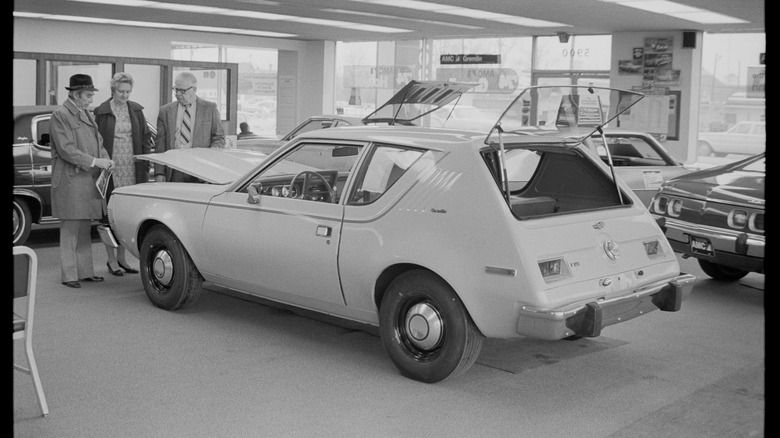
Small cars were flying out of showrooms in the early ’70s due to fuel shortages caused by the oil embargo, and the Gremlin was a popular choice for American car buyers immediately upon its release. Even though it didn’t come to showrooms until April of its debut year, AMC managed to move more than 25,000 Gremlins throughout the remainder of 1970.
That figure doubled the following year and ballooned to nearly 123,000 in 1973 and more than 171,000 in 1974. By the time the Gremlin was dropped in favor of the Spirit after the 1978 model year, AMC had sold more than 670,000 of the quirky little hatchbacks. That figure made the Gremlin AMC’s second-best-selling model behind its parent, the Hornet.
The Gremlin was popular for two reasons: it was cheap to drive off the lot, and it was inexpensive to keep full of gas at a time when rationing made fuel economy a primary concern for American car buyers. By 1972, the base price for a Gremlin remained below $2,000; by 1978, that cost had risen to just $3,539. The 1972 Hornet delivered drivers about 17 miles per gallon (mpg) of fuel efficiency, well above the average of 13.5 mpg for that model year’s vehicles.
The Gremlin was simple yet rugged
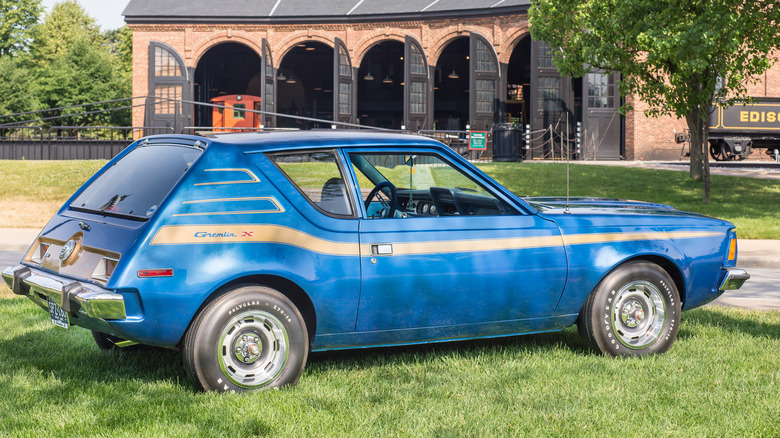
Although the Gremlin was officially classified as a hatchback, the door at the rear could not be opened, although the glass could be lifted at an angle for access to the rear of the car. Dick Teague told Motor Trend this was to help keep the Gremlin as structurally sound as possible. “The thing is like an integrated, welded-up steel box,” he said. “If we had a tailgate across there, where the gas tank filler is and the taillights are located, it would be a weaker car.”
The earliest Gremlins also borrowed drivetrain and chassis technology from older cars. AMC’s engineers eschewed newer overhead cam engines for cam-in-block inline sixes, and the first Gremlins came with drum brakes on all four wheels. Instead of putting in a coil spring suspension in the Gremlin’s chopped rear end, AMC simply used a shorter version of the Hornet’s leaf springs, which saved money but led to handling issues during spirited cornering, especially in bumpy conditions.
The Gremlin also was not as prone to rust as other subcompacts of the era like the Vega and the Pinto, meaning it’s not hard to find a ’70s vintage Gremlin in good condition on the secondary market today.
Its styling was refreshingly different

While the Gremlin may seem anachronistic to modern eyes, the design was fairly modern for its time, and the triangular shape distinguished it from the majority of its competitors, even the ones in the subcompact class it slotted into. Dick Teague explained that he and his fellow designers at AMC sought to create a niche for the Gremlin in what was becoming an increasingly crowded space.
“I don’t think the Gremlin’s going to win any styling awards,” he told Motor Trend. “But at least the car has personality and character and … a different-looking little image.” He said that his team considered — and rejected — the idea of using the Gremlin’s predecessor as the basis for its design. “We could have used the Hornet decklids and hoods and a lot of other things,” he added. “But it was just a little sedan, a little two-door sedan with minimal room in the back and not really very good looking.”
Gremlins are good for racing builds
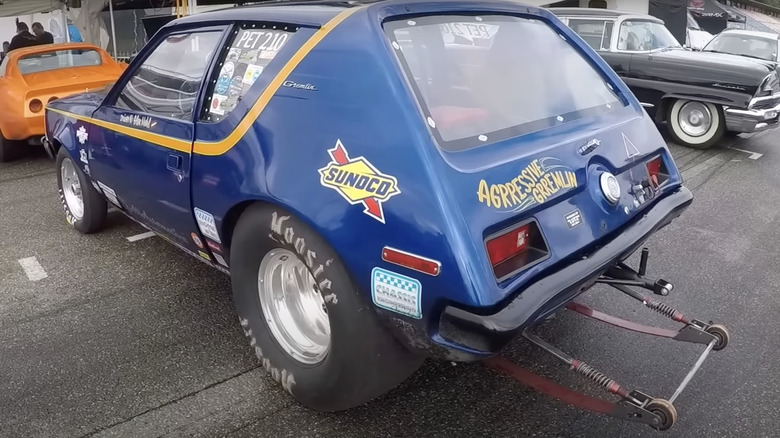
The Gremlin has a shape and dimensions very similar to those of a Japanese import that came along about a decade later: the Toyota Starlet. Like the Starlet, the Gremlin is popular with racing modders mainly because of how light it is. The Gremlin also has a couple of other advantages that make it a good base for a race car: it has a relatively large engine bay, and the body is exceptionally rigid. Beginning in 1973, AMC offered a 304 cubic inch (5.0 liter) V8 in the Gremlin, which was powerful enough to get the nearly 3,000-pound car from 0-60 mph in 8.1 seconds. In 1974, George Alderman won the IMSA RS series championship in a Gremlin.
Modern-day drag racers maintain a fondness for the Gremlin mostly due to its stiff body, long hood, and easy customizability. Florida drag racer Allan Kremkau bought a 304-equipped 1972 Gremlin for $2,100 as a teenager in 1973 and quickly learned the potential of the little hatchback. He told Drag Illustrated, “I lost my license twice in the car, I actually got a ticket once for ‘exhibition of speed.'”
Kremkau won his first race in the car in 1984 and eventually swapped out the Gremlin’s four-speed stick shift for an automatic transmission and upgraded the engine to a 750-horsepower 401 cubic inch V8. It’s the only race car Kremkau has ever owned, and he doesn’t plan on letting it go. “Sometimes I think about getting another car,” he said, “but then I wonder what on earth I would replace the Gremlin with?”
The Gremlin has history
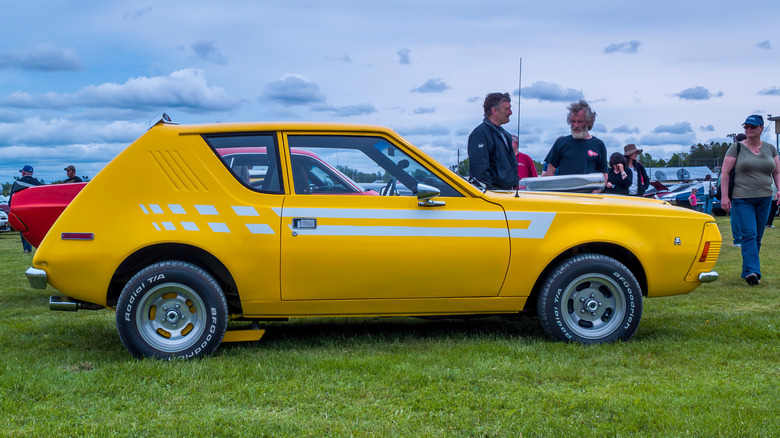
As could be expected for a vehicle with a distinctive character that has been around for more than half a century, the Gremlin has established a firm foothold in American history and popular culture.
Presidents Bill Clinton and George W. Bush both drove Gremlins in the 1970s; Clinton while campaigning for Congress in Arkansas and Bush while he was a student at Harvard. Former “The Daily Show” host Jon Stewart’s first car was a 1978 Gremlin, and comedian Jeff Dunham appeared on “Jay Leno’s Garage” to show off his 1972 and 1973 Gremlins.
Gremlins have also made numerous appearances on TV and in movies, including in the 1984 film “Gremlins.” Jerry Seinfeld took Stewart for a nostalgic ride in a ’78 Gremlin on an episode of “Comedians in Cars Getting Coffee,” and Gremlins have been featured in episodes of “Knight Rider,” “Veronica Mars,” and “Freaks and Geeks,” as well as the films “Rush,” “The Terminator,” and “Big Trouble in Little China.” Eminem also drove an orange Gremlin in the video for D12’s 2001 single “Purple Hills.”
Read More: https://www.slashgear.com/1470568/why-amc-gremlin-not-a-bad-car/





